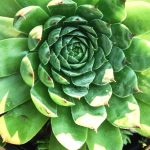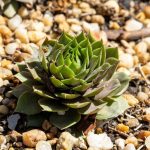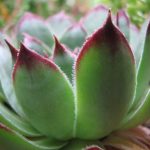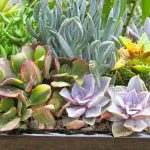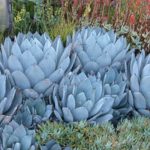For those seeking an easy-care succulent to enhance their garden, the Hens and Chicks plant is an excellent choice. These plants, aptly named for their growth pattern, thrive both indoors and outdoors. This article by gardening specialist Paige Foley delves into all you need to know about these beloved succulents and how to care for them.
Succulents are highly sought-after plants for indoor and outdoor cultivation, known for their low-maintenance appeal. Hens and chicks stand out as an ideal option for succulent enthusiasts, given their array of colors and sizes that cater to various aesthetics.
Belonging to the sempervium group of succulents, hens and chicks are adaptable, thriving both indoors and outdoors in diverse temperature conditions. This resilience makes them suitable for novices and seasoned succulent growers alike.
Referred to by various names like houseleek and liveforever, these popular succulents are robust and can flourish in almost any soil type. They provide an aesthetically pleasing addition to rocky landscapes, wall crevices, pots, and challenging growing locations.
Despite their rapid spread, caring for hens and chicks is straightforward as long as you fulfill their basic requirements. They propagate quickly, carpeting an area with rosettes of different sizes. Let’s explore the essential care tips for hens and chicks.
Insight into Hens and Chicks Plants
|
Plant Type
Perennial
Family
Crassulaceae
Genus
Sempervium spp.
Species
40+
Plant Spacing
2 to 3 feet |
Native Area
Europe and Africa
Sunlight Exposure
Full Sun
Plant height
3-4 inches
Water requirements
Low
Plant Depth
Soil Surface
Hardiness Zone
3-8
Maintenance
Low
Soil Type
Rocky, sandy, well-draining
Pest
Mealy bugs and aphids
Diseases
Root rot and rust About Hens and Chicks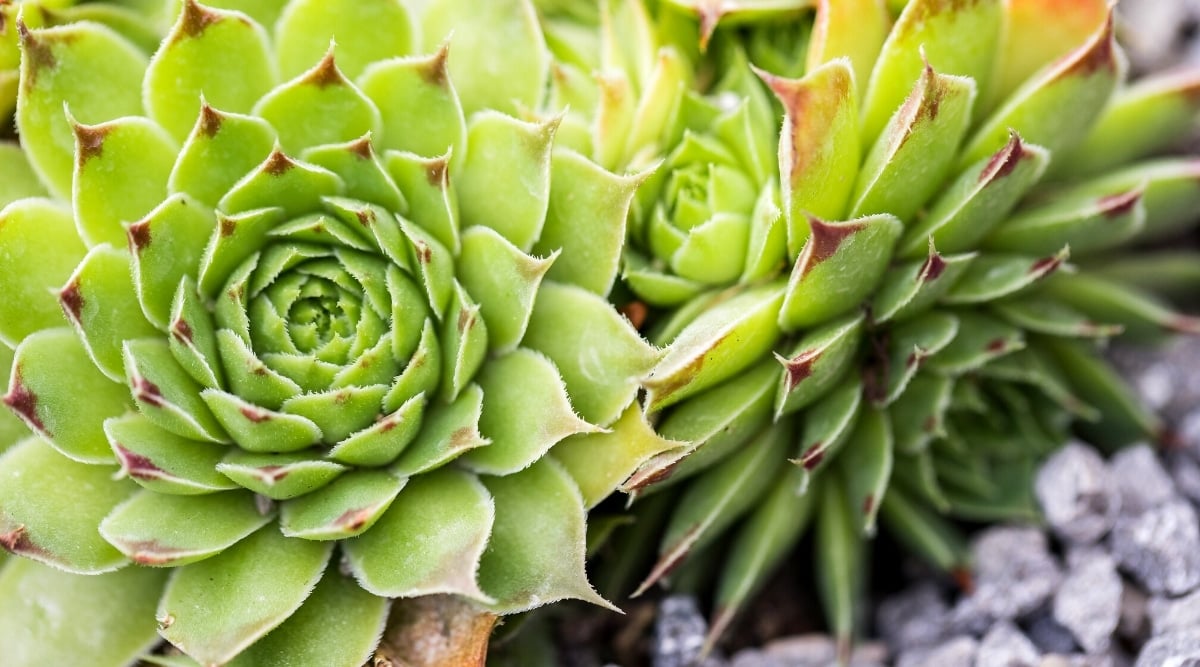 Hens and chicks derive their name from their rosette growth habit, starting with one central rosette and developing smaller rosettes around it, connected by lateral roots, like a mother and her chicks. Thriving in harsh conditions, hens and chicks are alpine plants suitable for rocky terrain, small crevices, and sandy areas, making them ideal for difficult planting locations. These succulents are great for indoor potted plants, requiring minimal maintenance and infrequent watering, making them perfect for novices or those with busy schedules. Growth Rate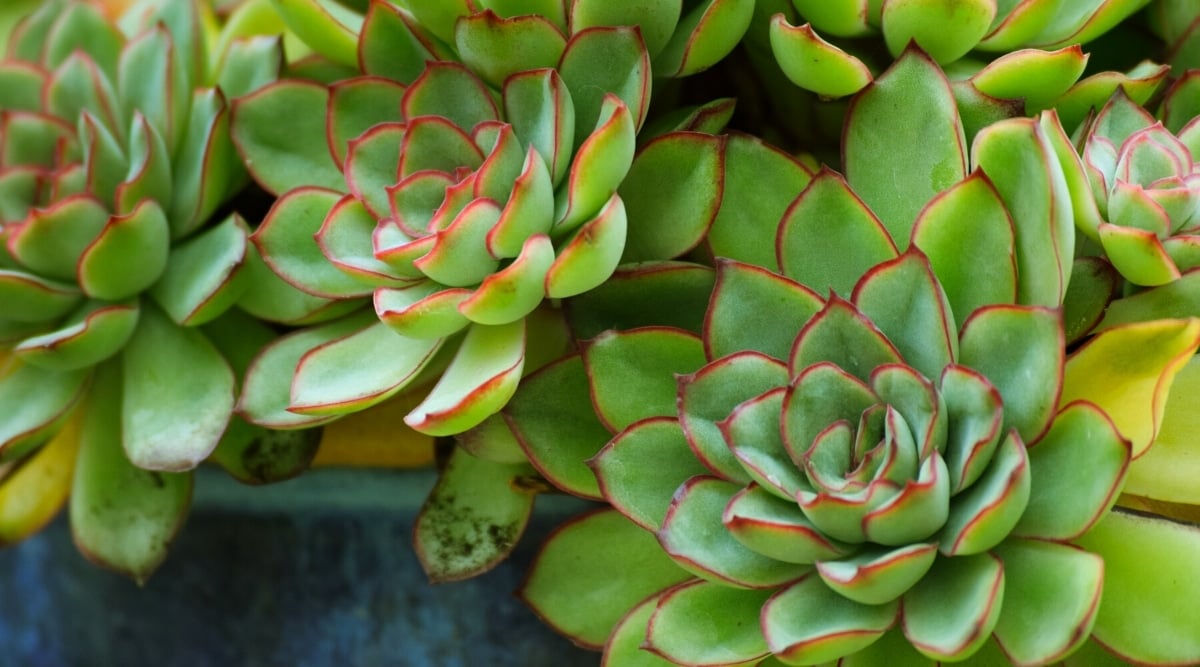 Hens and chicks, known for producing offsets from the mother plant, enter their growing season in spring lasting through summer. Within this period, they typically yield 1 to 3 generations of plants. Maturing at a height of 3 to 4 inches and spreading up to 2 to 3 feet, hens and chicks experience a growth spurt in the fall before going dormant in winter and resuming the cycle in spring. How To GrowVarious factors influence the growth of these succulents. Adequate sunlight exposure, suitable soil type, proper watering, and adequate soil nutrition are crucial for healthy plant development. The right temperature and climate conditions are also essential. Let’s delve into each of these growth aspects in more detail. Light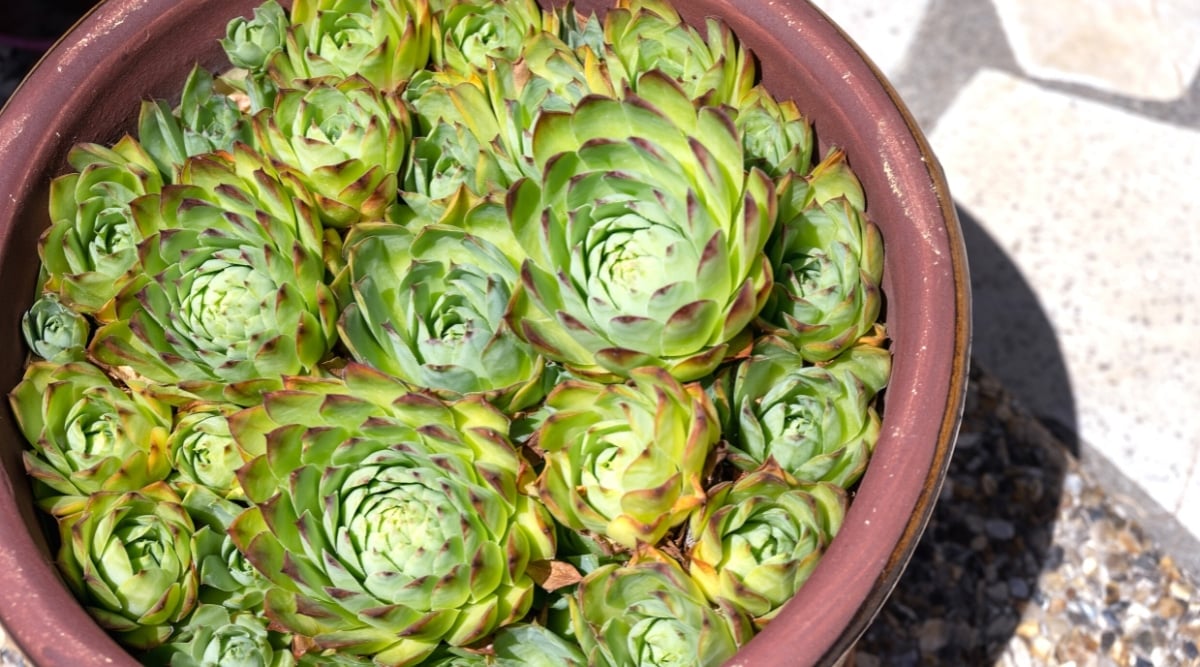 Thriving in sunlight, hens and chicks display vibrant colors with increased sunlight exposure. Warmer temperatures intensify foliage coloration, while cooler weather in fall may mute the colors. Partial shade is tolerated, especially in hot climates, but this may affect growth rate and color intensity. Soil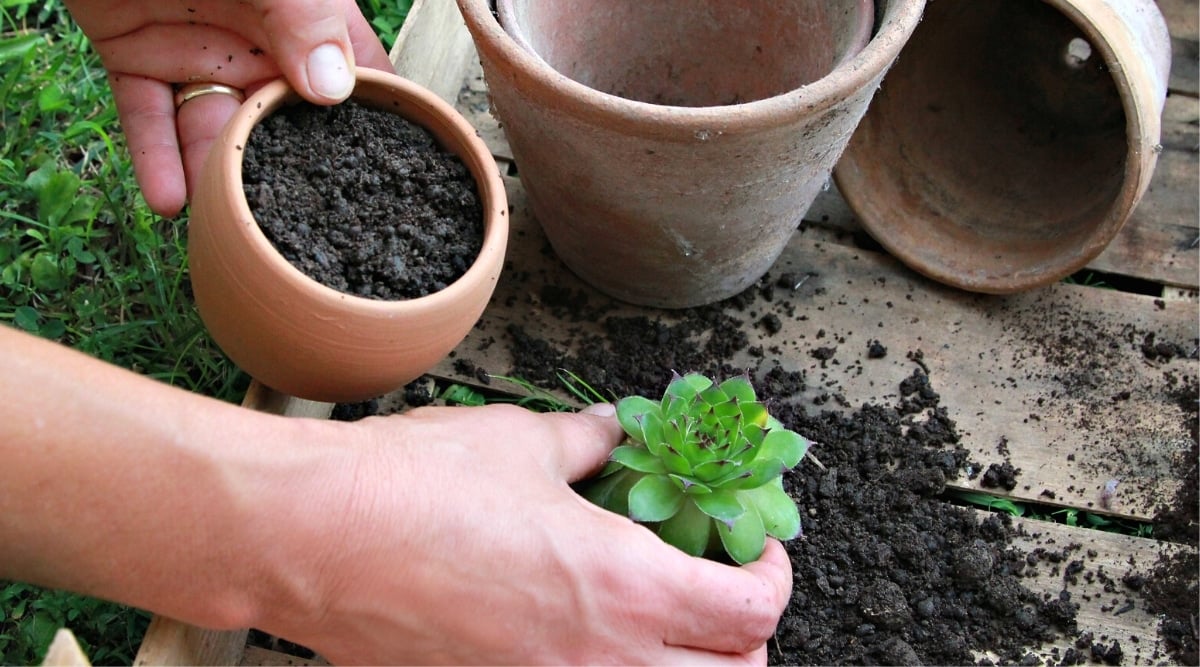 Hens and chicks prefer well-draining gravelly and sandy soils and may face issues in soggy environments. Consider amending poorly draining soils with sand or gravel before planting, or use specific succulent/cacti blends in containers. Soil amendments like pumice, sand, or gravel enhance drainage and airflow, promoting healthier plants. Water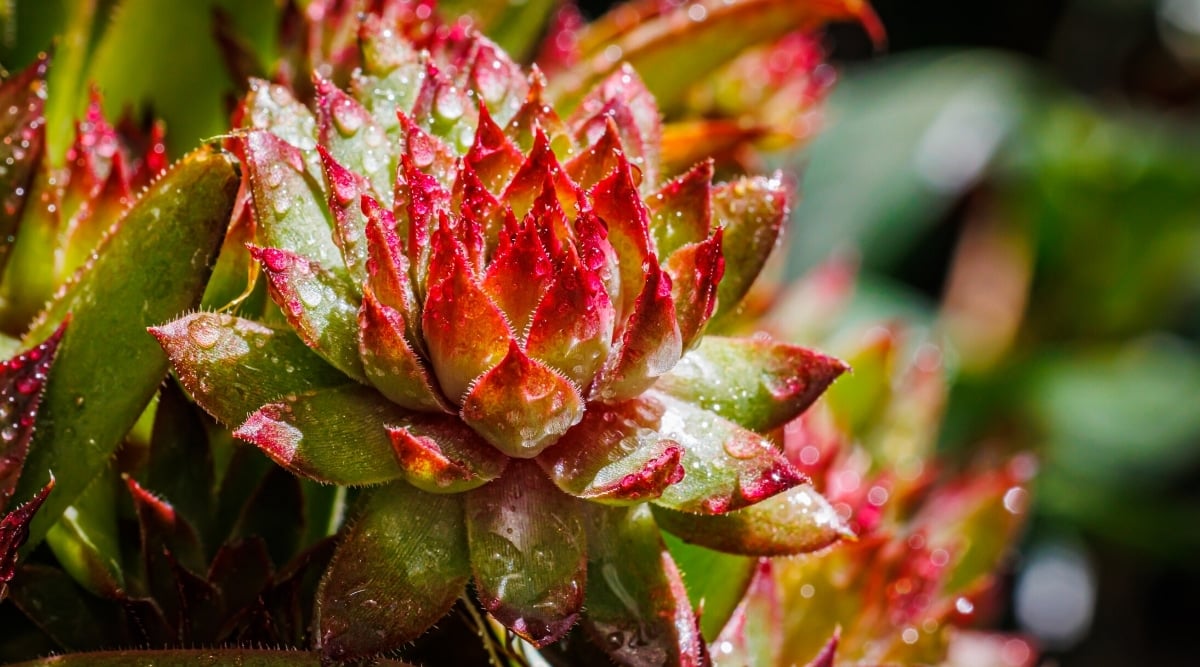 Hens and chicks, being drought-tolerant, can withstand extended periods without water. Occasional watering post-transplantation aids establishment, but established plants require minimal watering. Deep, infrequent watering encourages deep root growth. Sparse foliage or leggy appearance signals the need for water, indicating soil moisture levels. Temperature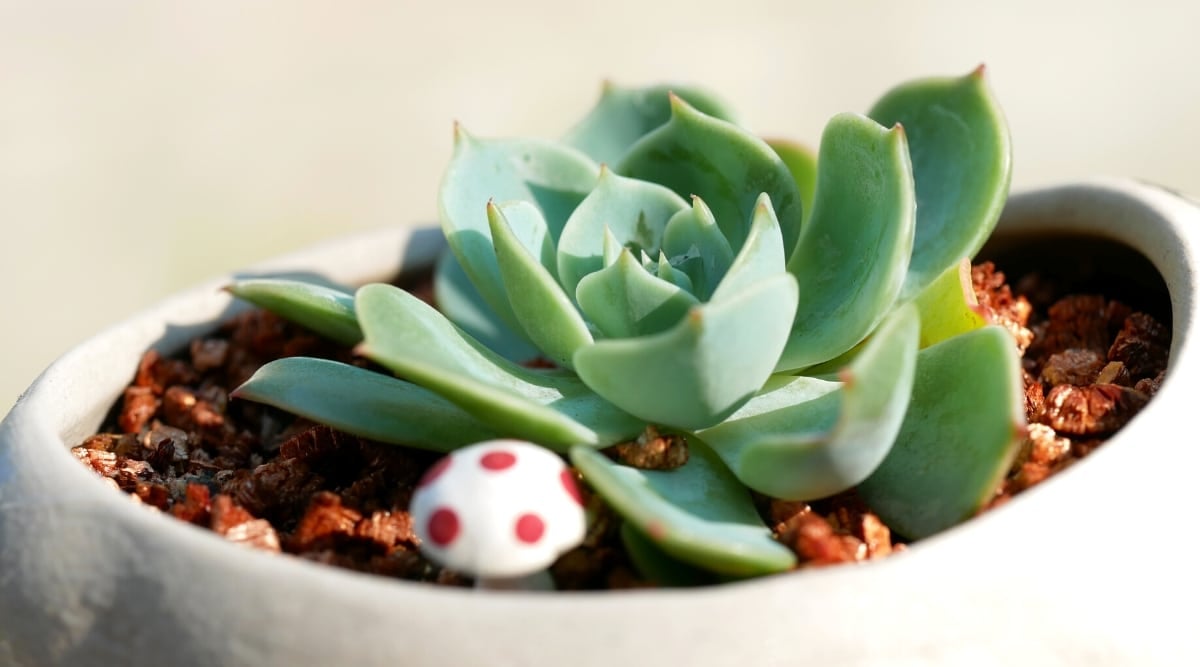  Discover the adaptability of hens and chicks as they thrive in diverse temperature ranges. Ideally, they favor temperatures between 65 to 75° F but can withstand both cooler and warmer conditions. In regions with temperatures exceeding 75° F, consider providing shade during peak sun hours. In case temperatures drop too low, growth halts as they enter a semi-dormant phase crucial for their overall health. For those residing in hardiness zones below 4, it’s recommended to move them indoors or to a sheltered area. Cultivars like ‘Hairy’ and ‘Jovibarba’ are more prone to damage in colder weather; hence, it’s advisable to keep them indoors or shield them with a glass or plastic cover. Fertilizer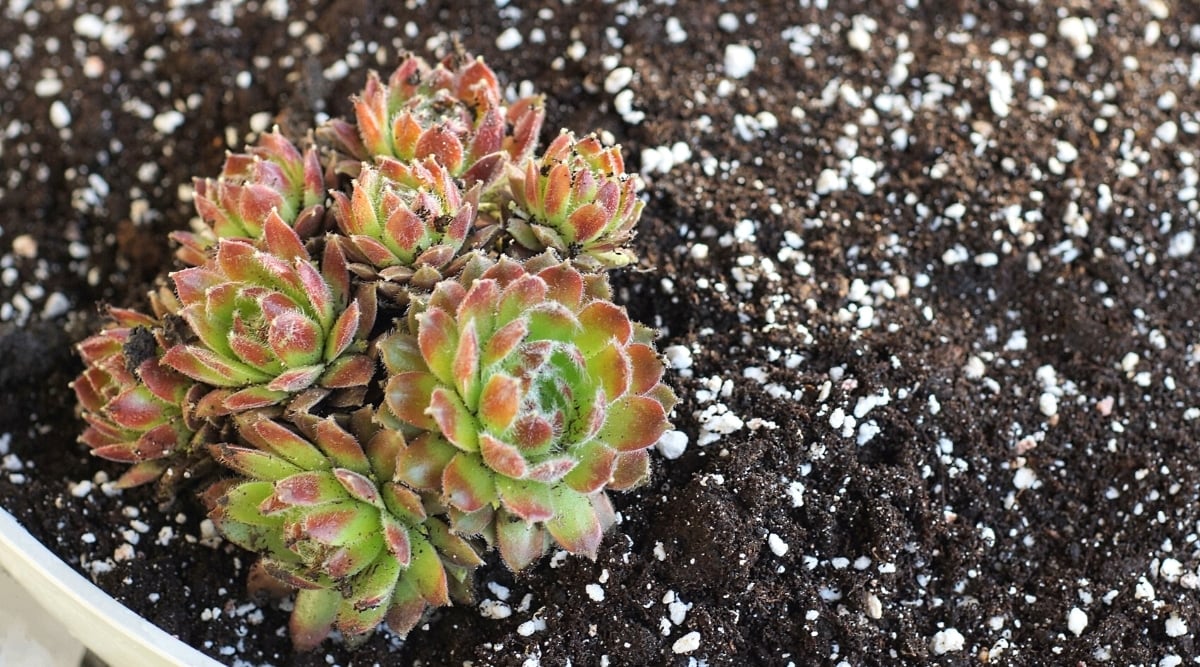  While hens and chicks planted in the ground usually don’t require fertilization due to sufficient soil nutrients, those in containers may benefit from additional nutrients. Opt for a fertilizer specifically formulated for succulents and cacti, taking care not to over-fertilize to avoid issues like dieback. If plants show signs of distress post-fertilization, pause fertilizing for a few weeks for potential recovery. When to Plant  Plant hens and chicks year-round, avoiding extreme cold and heat to prevent plant shock. Optimal for spring planting, this season encourages chick production and rapid landscape or pot filling. Indoor planting is feasible at any time, but consider doing so before the fall growth surge. For outdoor planting, aim for 5 to 7 weeks before the first frost. Indoor planting can be done year-round with suitable growing conditions. Maintenance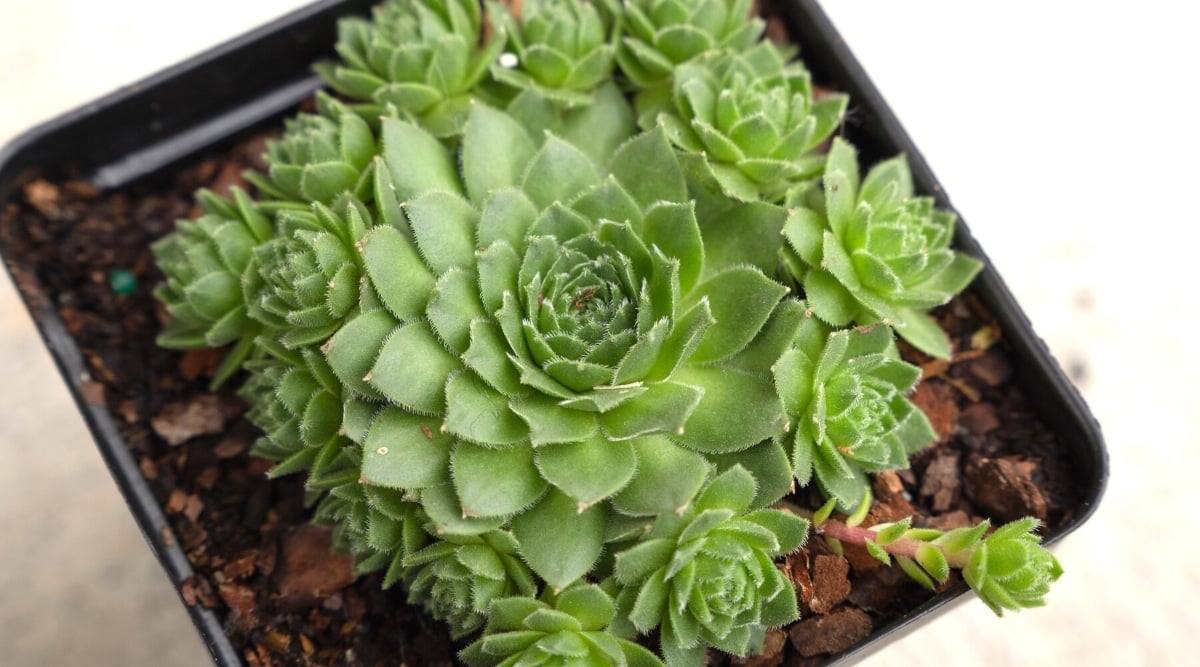  For those seeking low-maintenance options, hens and chicks are the perfect choice. Thriving on minimal attention, these plants continuously produce offsets even in challenging conditions. Plant them in full sun and witness their effortless growth. After the mother hen flowers, you can leave her with her “chicks” unless she shows signs of disease or pests. The surrounding chicks will cover the deceased hen, maintaining the aesthetic. Routine weeding around rosettes may be necessary, but overall, they are self-sufficient. Pruning Succulents like hens and chicks are generally low-maintenance and don’t require frequent pruning. However, if they outgrow their space or container, a light trim might be necessary. Just remove some of the chicks to create more room for growth. The separated chicks can either be discarded or replanted in a new location to expand your succulent collection. While it may be tempting to trim the flowering stalk of the hen to prolong her life, this practice is discouraged. This phase is crucial for the plant’s overall health and vitality. OverwinteringHens and chicks are adaptable to winter conditions and require minimal preparation. Clearing debris around the base of the plant is advisable to prevent rotting, as these succulents dislike excess moisture during the cold season. Moving debris away enhances air circulation and aids in maintaining plant health. In regions with harsh winters, potted succulents need protection. Consider relocating them to a sheltered area or indoors for extra care. While plants in the ground can endure severe cold, potted succulents are more vulnerable and require safeguarding against potential damage. In colder climates, the succulent’s leaves may turn brown and wither as they enter a dormant phase. This natural process allows the rosettes to conserve energy for revitalization in the following spring. It is best to leave the plants undisturbed until warmer temperatures stimulate their growth. FloweringEventually, the succulent will produce a flower, marking the end of the mother plant’s life. The chicks will continue to thrive, eventually blooming and perishing in a similar cycle. Allowing the plant to bloom and produce seeds is beneficial for its well-being. A bulge or stalk emerging from the center of the mature hen indicates impending flowering. While outdoor plants typically bloom in summer, those in containers might flower in late spring or early summer. Indoor plants may exhibit varied blooming patterns due to consistent environmental conditions. PropagationPropagating hens and chicks is a simple process involving the removal of offsets or chicks with intact roots. Placing the offset into a shallow hole and providing light watering for a few days while ensuring soil dryness between watering sessions is essential. To prevent overwatering, allow the soil to dry out between waterings and monitor the propagation closely. With proper care, the succulent offsets should develop roots within a week and establish themselves successfully. Growing From SeedIt is possible to grow hens and chicks from seeds obtained from mature flowers. You can collect seeds from the flower’s pod after it wilts or purchase them from a nursery. Sowing the seeds in a succulent-specific potting mix and providing adequate sunlight will support their growth. After harvesting the seeds, spread them across the potting soil and ensure they receive sufficient sunlight for germination. Maintaining proper moisture levels and suitable light conditions will help the succulent seeds sprout and develop successfully. Water the seeds and place them in a bright location, preferably in a warm room between 70 to 75 F. Expect seedlings to emerge within three weeks. Seeds from hybrid varieties may bring surprises in the appearance of the plants. Not all seeds will germinate, which is normal. Keep planting until you achieve your desired number of plants. When growing hens and chicks indoors, finding the right spot may require some trial and error to meet their sunlight needs. They thrive with at least 6 hours of sunlight daily. To prevent overcrowding, divide the chicks from the hen and plant them in a new pot. Share the joy of growing these easy-to-care-for succulents with friends and family. There are various hens and chicks varieties available in different colors, ranging from red to blue, with changing hues based on the climate. Whether you prefer a rosette shape with thick leaves, there’s a variety to match your style. Popular Varieties‘Sirius’‘Sirius’ succulents form dense rosettes of green leaves with vibrant red-orange tips and reach about 4 inches in diameter when mature. ‘Wendy’‘Wendy’ succulents have green leaves turning red at the tips, with soft tiny white hairs covering them, forming dense colonies of offsets. ‘Berry Blues’‘Berry Blues’ succulents have blue-green leaves in geometric rosettes, growing shoots near the mother plant, with a cold-tolerant nature. ‘Cotton Candy’‘Cotton Candy’ succulents feature dense rosettes of green leaves with burgundy tips, with cobweb-like white cover on the central leaves. This unique succulent showcases green leaves with hints of burgundy at their tips. The standout characteristic of this variety is the white cobweb-like center, which actually serves as a protective mechanism against drought. These webs aid in trapping moisture during low water availability situations. Common Uses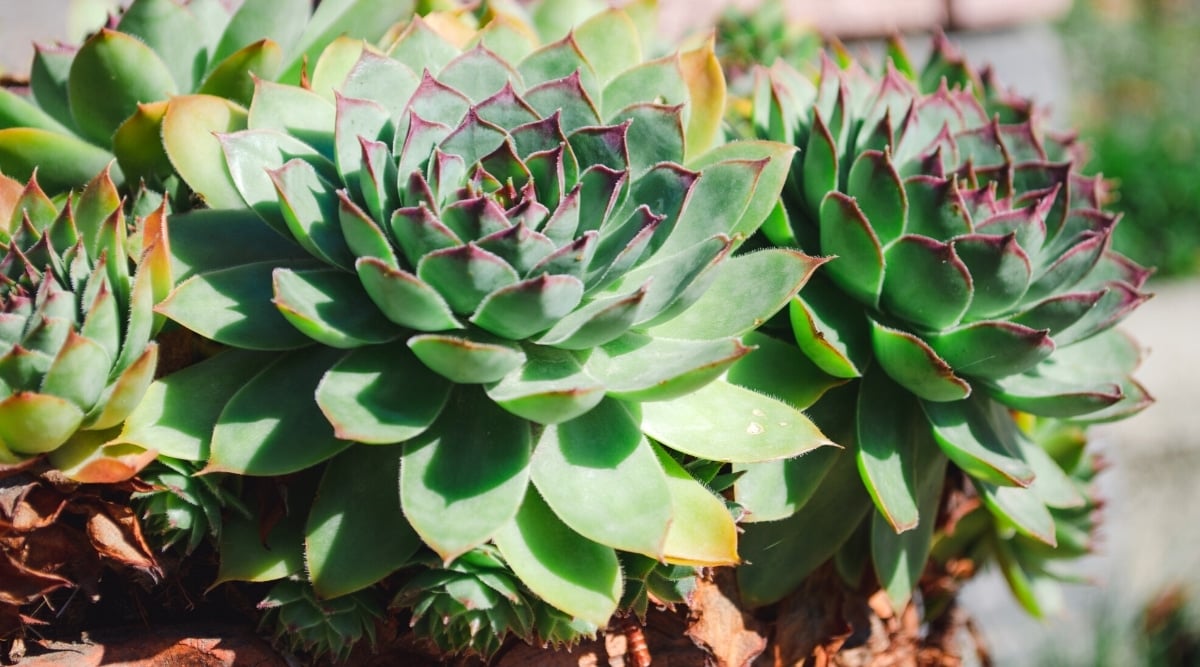  Thriving in arid soil and sunlight-rich locations, hens and chicks showcase their resilience, flourishing in rock gardens, crevices along rock walls, and containers. They coexist harmoniously with other succulents of similar hardiness zones, adapting effortlessly in various planting scenarios. These succulents are versatile and can be grown indoors to inject vibrancy into dull winter settings. They are ideal introductory succulents for novice indoor gardeners. Plant ProblemsWhile hens and chicks are robust plants, they may encounter common issues that can lead to color alterations and plant demise if not promptly addressed. Let’s explore some prevalent challenges associated with cultivating these succulents. Plants Turned Mushy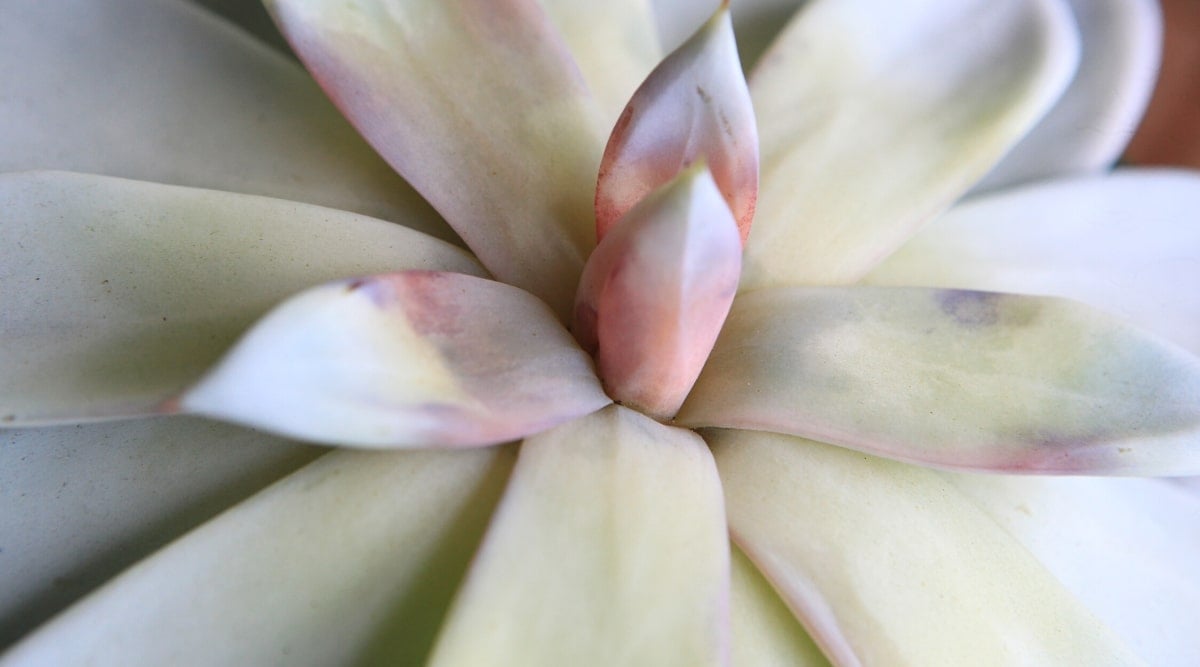  If you notice your succulent leaves becoming soft and mushy, it indicates an overly moist surrounding, causing the plant to decay from the roots upwards. To rectify this situation, it’s advisable to uproot the affected plant and eliminate the infected parts. The chicks, if unaffected, can be replanted in a drier habitat. Dieback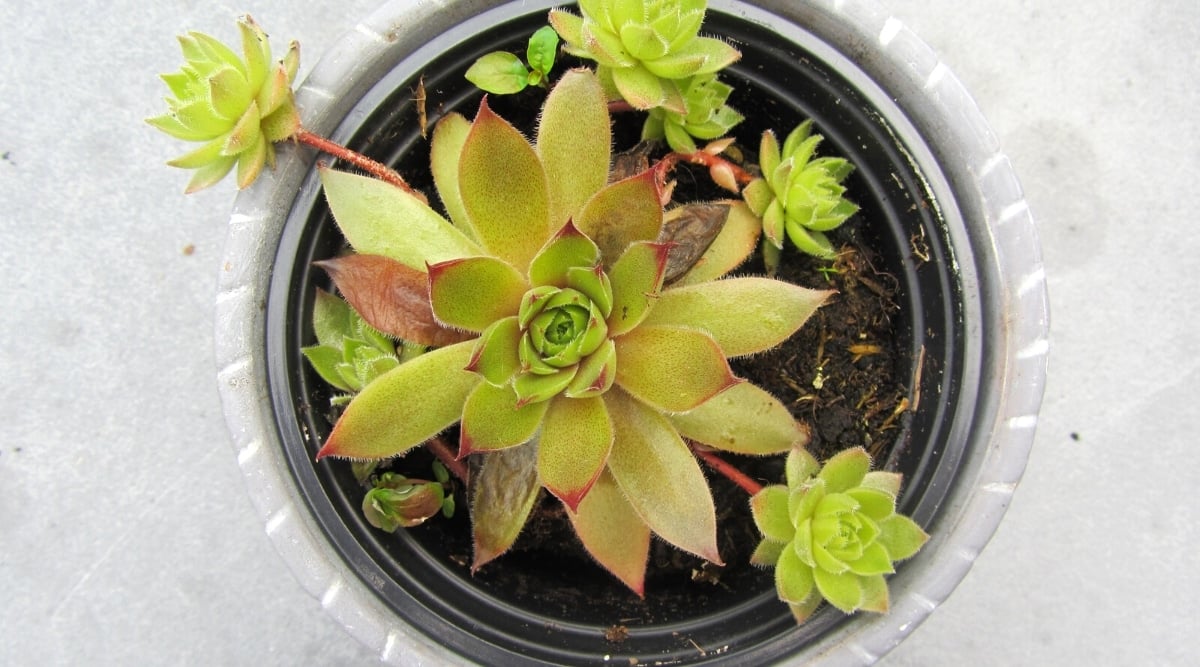  Dieback often occurs when the “hen” rosette flowers and produces seeds, subsequently causing the “hen” to deteriorate, although the chicks will persist. This phenomenon can also signal overwatering or excessive fertilization. Inspect the soil and surroundings to identify the root cause of dieback. Check soil moisture levels by digging into it; if excessively wet, consider incorporating sand or gravel for enhanced drainage. Exercise caution when amending soil around established plants. Aphids and Mealybug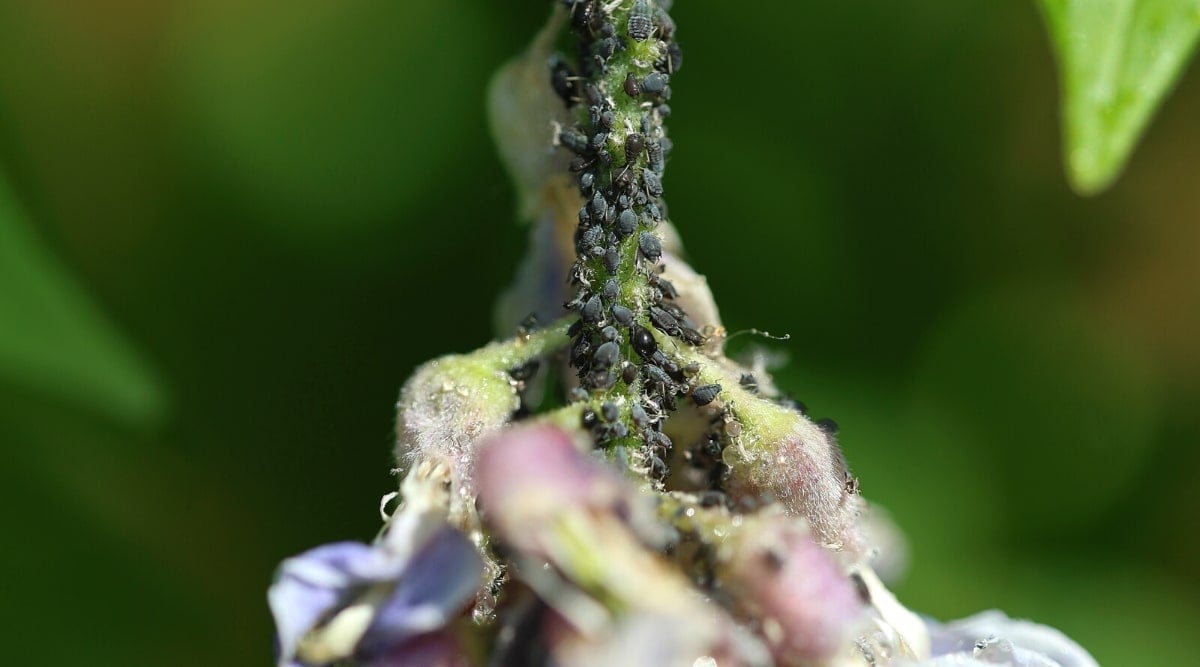  While hens and chicks are generally resilient against pests, adverse growing conditions can stress them, making them susceptible to aphids and mealybugs. These pests are more prevalent in indoor plants compared to outdoor-grown specimens. If aphids or mealybugs plague your plants, you can opt to apply a suitable insecticide. Enhancing airflow, locating plants in sunny spots, and improving soil drainage are effective preventive measures against these insects. Frequently Asked Questions
Are hens and chicks toxic?
|


